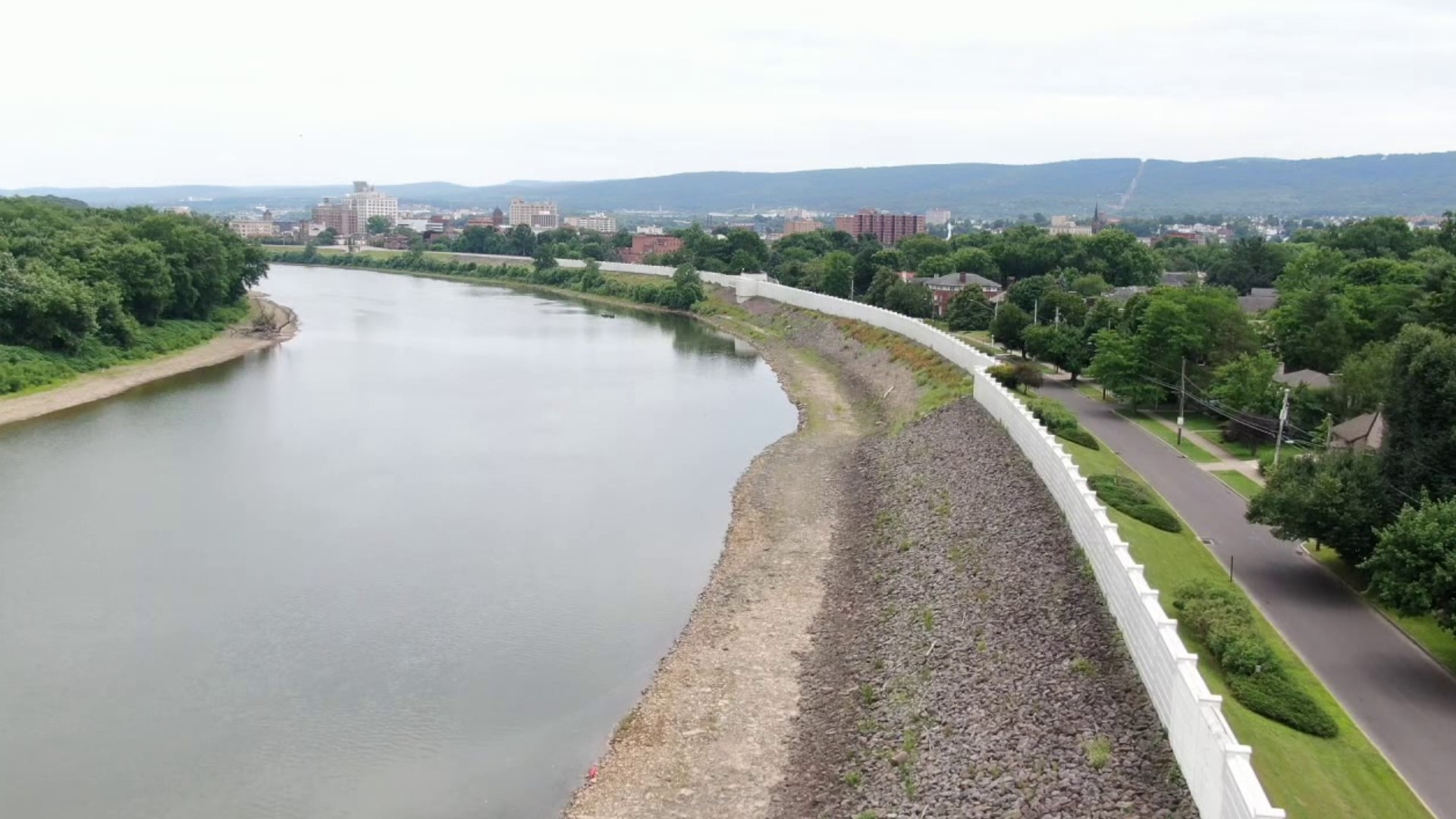LUZERNE COUNTY, Pa. — The levee raising in the Wilkes-Barre area was the biggest project to come after the destruction from Agnes.
Newswatch 16's Courtney Harrison spoke with current and former directors of the Luzerne County Flood Protection Authority about the levee that was built to protect the Wyoming Valley.
Jim Brozena was just a junior in high school when flooding from Hurricane Agnes ravaged this part of the Wyoming Valley. Brozena says he knew early on he wanted to be an engineer. His career would come full circle when he began working as an assistant Luzerne County engineer in 1979.
"One of my first tasks, when I went to work for the county, was to go to a meeting at Wilkes College to about the raising of the levees. The federal government said right after 1972, we're going to increase flood protection. They were still working on it., and basically, I worked on the levee project my entire career," said Jim Brozena, the former Executive Director of Luzerne County Flood Protection Authority.
Brozena worked on the $200 million project from 1996 to 2005. One year later, he became the executive director of the Luzerne County Flood Protection Authority. He says he felt confident in the levee and its ability to withstand whatever mother nature threw at it.
He added, "We felt that we had built a robust system and something that would handle what was Agnes, which was the largest storm of record at the time."
In 2011, Tropical Storm Lee rolled in. River levels crested well above flood stage, flooding homes and businesses throughout the area. Current Executive Director of the Luzerne County Flood Protection Authority Chris Belleman says it could have been worse had the levee not been raised after Agnes.
"If that levee raising project had never occurred, I mean, we would have the valley would have been destroyed a second time in 2011 and in the same generation," explained Belleman. "I think this valley would look much, much different than it does today."
It's been 25 years since the levee raising project was completed, and Belleman says there are projects in the works for updates, such as adding movable barriers to replace sandbags and replacing the electronic controls at the pump stations.
"That's to make our system more reliable and in to ensure that it's going to be there when we need it for the next high water event," added Belleman.
Belleman says it will cost about $1 million to replace those electronic controls, but the cost of that project far outweighs the cost of loss of life.
See more Agnes-related stories on WNEP's Youtube page.

